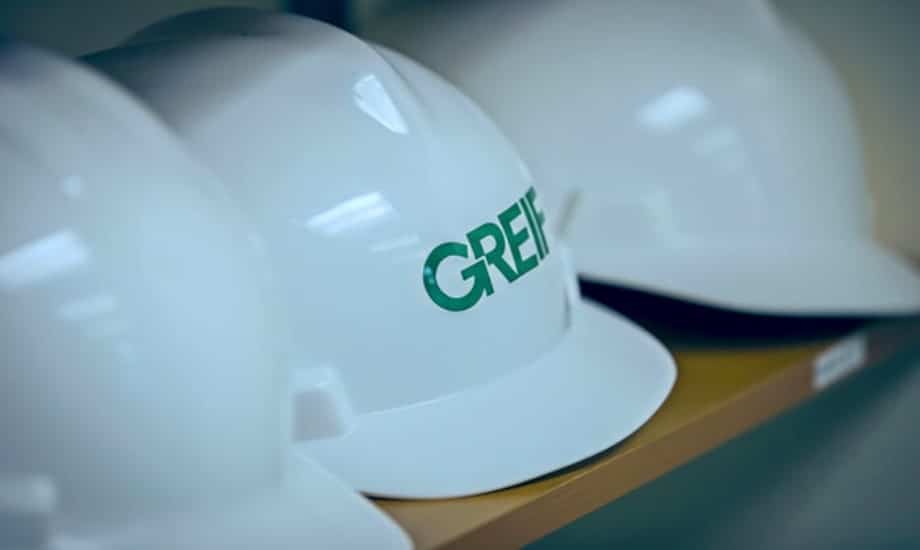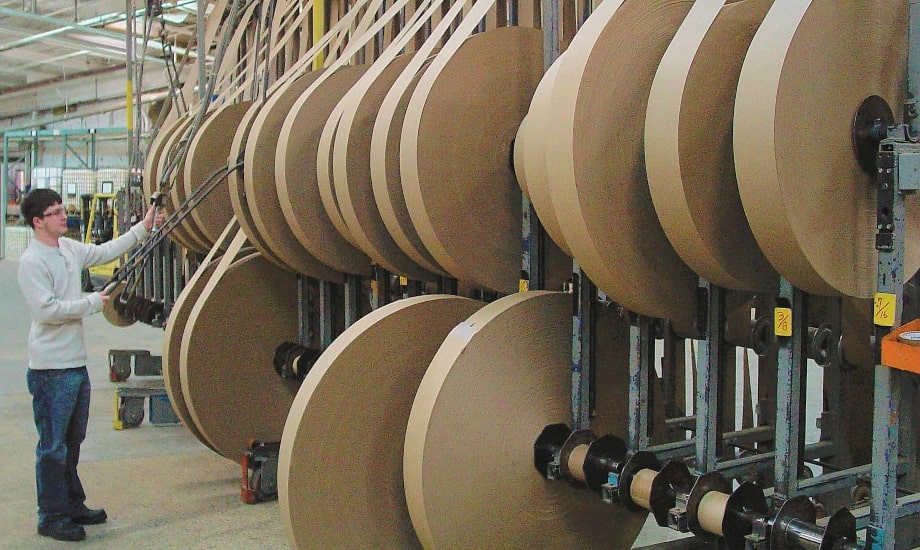水为何如此重要
作为一家全球制造公司,Greif 有责任尽量减少用水量并改善水质,特别是在耗水量最大的运营中。负责任的水资源管理减少了我们对水的需求,因为水资源短缺和水成本正在上升,并确保我们设施排放的水经过处理且安全,以保护我们运营所在社区的健康。我们的水资源管理实践同时实现了这些目标,同时提高了运营效率并最大限度地降低了监管风险。
治理
仅限 1%
水资源基线压力较大地区的用水总量
我们在水质方面的努力已经使我们实现了到2025年减少10%的目标。
Greif 监控关键绩效指标 (KPI),以确保废水得到妥善处理。如果发生处理事故,设施经理会观察到这些 KPI 的变化,从而启动调查以确定根本原因并解决问题。必要时,Greif 会聘请第三方专家来支持我们的调查。例如,2020 年,Greif 的 Tama 工厂的生化需氧量 (BOD) 和氮浓度很高。Greif 与第三方签订了合同,进行现场检查并提出纠正措施建议。根据他们的建议,我们增加了营养添加量,改进了分析测试以监测营养水平,并引入了化学需氧量 (COD) 测试,以便更快地收到有关潜在问题的反馈。
虽然 Greif 对水资源的影响主要体现在我们的 PPS 运营中,但我们采取措施减少所有运营中的用水量,特别是在拉丁美洲、非洲和中东缺水地区。在这些设施以及我们所有的运营中,我们会降低水压过高的地方,更换漏水的阀门,并在可能的情况下收集和使用雨水。我们位于沙特阿拉伯利雅得的全球工业包装工厂实施了许多此类措施,努力减少和回收废水,最终使工厂的垃圾填埋量减少了 32%。请参阅我们的 浪费 页面上了解更多有关他们成就的信息。
2021 年,我们将在各个工厂开发标准的环境数据仪表板,以更好地了解和管理水和废水以及能源数据,并继续努力寻找节水机会。
目标与进展
2017 年,Greif 宣布了 2020 年的目标,即在原有 Greif 工厂中,将每吨产量的生化需氧量 (BOD) 从 2014 年的 1.47 公斤减少 10%。我们 2017 年的实质性流程促成了新的 2025 年目标的制定,并将我们的 BOD 目标重申为 2025 年目标。此外,2021 年,我们计划根据美国森林和造纸协会制定 2030 年目标和指标。
2018 年,我们重新评估了历史用水量和 BOD 数据,以确认我们的基线和假设,从而支持与水有关的持续改进。通过这一过程,我们将 2014 年的 BOD 基线重新调整为 1.40。
2025 年目标:到 2025 财年结束,按照 2014 年重述的基准,将 Riverville 和 Massillon 工厂每公吨综合产量的 BOD 排放量减少 10%(以千克为单位)。
进步:自 2017 年以来,我们在传统的 Greif 箱板纸工厂中将每吨产量的 BOD 降低了 71.8%。我们在实现 BOD 目标方面取得重大进展,得益于我们在马西隆工厂安装了废水处理设施。该项目于 2017 年 7 月完工,在 2017 年取得了适度改善,并在 2018 年远远超出了预期。这些好处在 2020 年继续实现。
2021 年,我们将继续跟踪降低 BOD 的进展情况,同时控制工厂的特定用水量,并重新评估我们的目标,将我们原来的 Greif 工厂和现在已成为我们组织一部分的 Caraustar 工厂纳入其中。此外,2021 年,我们将宣布工厂新的节水目标。
性能数据
水*
|
|
2016 财年 |
2017 财年 |
2018 财年 |
2019 财年 |
2020 财年 |
|---|---|---|---|---|---|
|
取水量(千立方米)* |
8,420.2 |
9,666.3 |
9,360.8 |
13,864.4 |
12,936.6 |
|
地表水 |
- |
9,242.7 |
8,630.0 |
10,266.8 |
10,132.0 |
|
地下水 |
- |
423.6 |
730.7 |
3,597.6 |
2,804.6 |
|
雨水 |
- | - | - | - | - |
|
废水 |
- | - | - | - | - |
|
市政供水† |
- | - | - | - | - |
|
废水排放量(千立方米)** |
7,961.4 |
8,983.2 |
9,316.2 |
12,403.92 |
11,935.1 |
|
詹姆斯河 |
- |
8,788.8 |
8,907.1 |
7,949.5 |
8,375.0 |
|
马西隆市 |
- |
191.6 |
407.1 |
424.0 |
355.8 |
|
塔斯卡拉瓦斯河 |
- |
2.8 |
2.0 |
2.5 |
8.8 |
|
Sweetwater Creek^ |
- |
- |
- |
0.0 |
0.0 |
|
科布县污水处理厂^ |
- |
- |
- |
844.9 |
855.0 |
|
辛辛那提大都会污水处理区^^ |
- |
- |
- |
37.6 |
40.6 |
|
密尔沃基大都会污水处理区^^ |
- |
- |
- |
349.0 |
335.9 |
|
洛杉矶县卫生区 WWTF^^ |
- |
- |
- |
196.8 |
189.1 |
|
三哩溪^ |
- |
- |
- |
0.0 |
- |
|
巴尔的摩村 WWTF** |
- |
- |
- |
0.0 |
6.1 |
|
西支 Paw Paw Creek ** |
- |
- |
- |
697.1 |
581.4 |
|
圣何塞-圣克拉拉地区污水处理厂^^ |
- |
- |
- |
288.1 |
334.2 |
|
塔科马中央污水处理厂^^ |
- |
- |
- |
6.9 |
8.5 |
|
菲奇堡市污水处理厂^ |
- |
- |
- |
322.6 |
309.0 |
|
爱荷华河** |
- |
- |
- |
291.8 |
364.9 |
|
樱桃湖** |
- |
- |
- |
597.8 |
550.4 |
|
爱荷华支流** |
- |
- |
- |
58.0 |
78.6 |
|
生化需氧量(千公斤) |
1,050.4 |
890.4 |
204.2 |
3,508.3 |
3,457.1 |
|
总悬浮固体(千克) |
546,857 |
465,098 |
349,003 |
1,224,442 |
1,045,928 |
|
磷(公斤) |
5,728 |
4,991 |
6,617 | 4,708 | 4,445 |
|
产量(公吨) |
665,000 |
690,000 |
713,336 |
1,729,062 |
1,661,228 |
|
消耗率(立方米3/公吨) |
12.7 |
14.0 |
13.1 |
8.02 |
7.79 |
笔记:
- 2015 年至 2018 年的数据来自 Greif 的两家造纸厂,其中一家位于弗吉尼亚州里弗维尔,另一家位于俄亥俄州马西隆。从历史上看,这两家造纸厂占 Greif 全球水足迹的 90% 以上。它们分别从詹姆斯河和现场水井取水。2019 年的数据包括 12 家于 2019 年收购和整合的前 Caraustar 工厂。所有 2019 年的数据均为全年数据。我们工厂排放的废水质量符合许可要求。没有其他组织使用排放的水。WWTP = 废水处理厂。
- 2019 财年数据包括 Mobile Wright Smith WWTP,该污水处理厂于 2020 年关闭,并已重新陈述,以正确核算 2019 财年 West Branch Paw Paw Creek 的排放量。
经过初次澄清、二次澄清和曝气处理后直接排放。
采用废水预处理,包括去除可溶性 BOD。
仅使用固体进行废水预处理。
† Greif 目前不跟踪市政供水的取用情况。
|
基线水资源压力高或极高地区的用水情况 |
2020 财年 |
|---|---|
|
取水量(千立方米) |
170.4 |
|
总取水量百分比 |
1% |
|
用水量(千立方米) |
162.7 |
|
占总用水量的百分比 |
1% |
改善我们的废水
2017 年,Greif 位于俄亥俄州马西隆的工厂完成了水处理设施的建设,以显著降低工厂排放水的生物需氧量 (BOD),然后再将其送回市政处理厂。高 BOD 水平会促进细菌生长,释放异味,必须使用化学品进行控制。自安装处理设施以来,我们向市政系统排放的 BOD 减少了 96% 以上,为我们 2025 年的 BOD 减排目标做出了贡献。这也消除了以前控制细菌所需的几种化学品。

俄亥俄州巴尔的摩工厂节水
2020 年,Greif 位于俄亥俄州巴尔的摩的工厂从将处理过的废水直接排放到当地小溪,转变为将预处理过的废水排放到当地水处理设施,该设施使用最先进的膜处理系统对水进行进一步处理。这一转变既减少了总体水排放量,也支持将更清洁的水返回社区。Greif 多年来与当地和州政府合作,设计和批准了该项目,该项目于 2019 年获得批准,并于 2020 年 10 月完工。该项目每年将减少 55 万立方米的用水量。由于这一转变,当地小溪每年数吨的生物需氧量和总悬浮固体也被清除,社区受益于更清洁的地表水。

可持续发展亮点
仅限 1%
水基线压力较大地区的用水总量
我们在水质方面的努力已经使我们实现了到2025年减少10%的目标。


